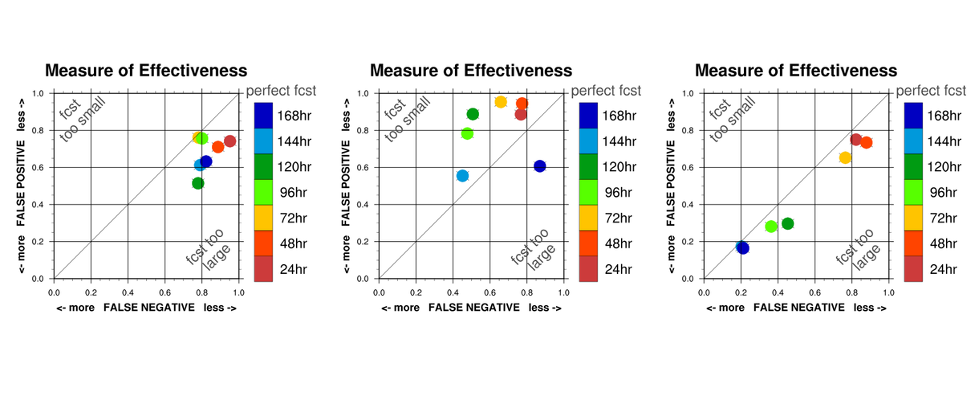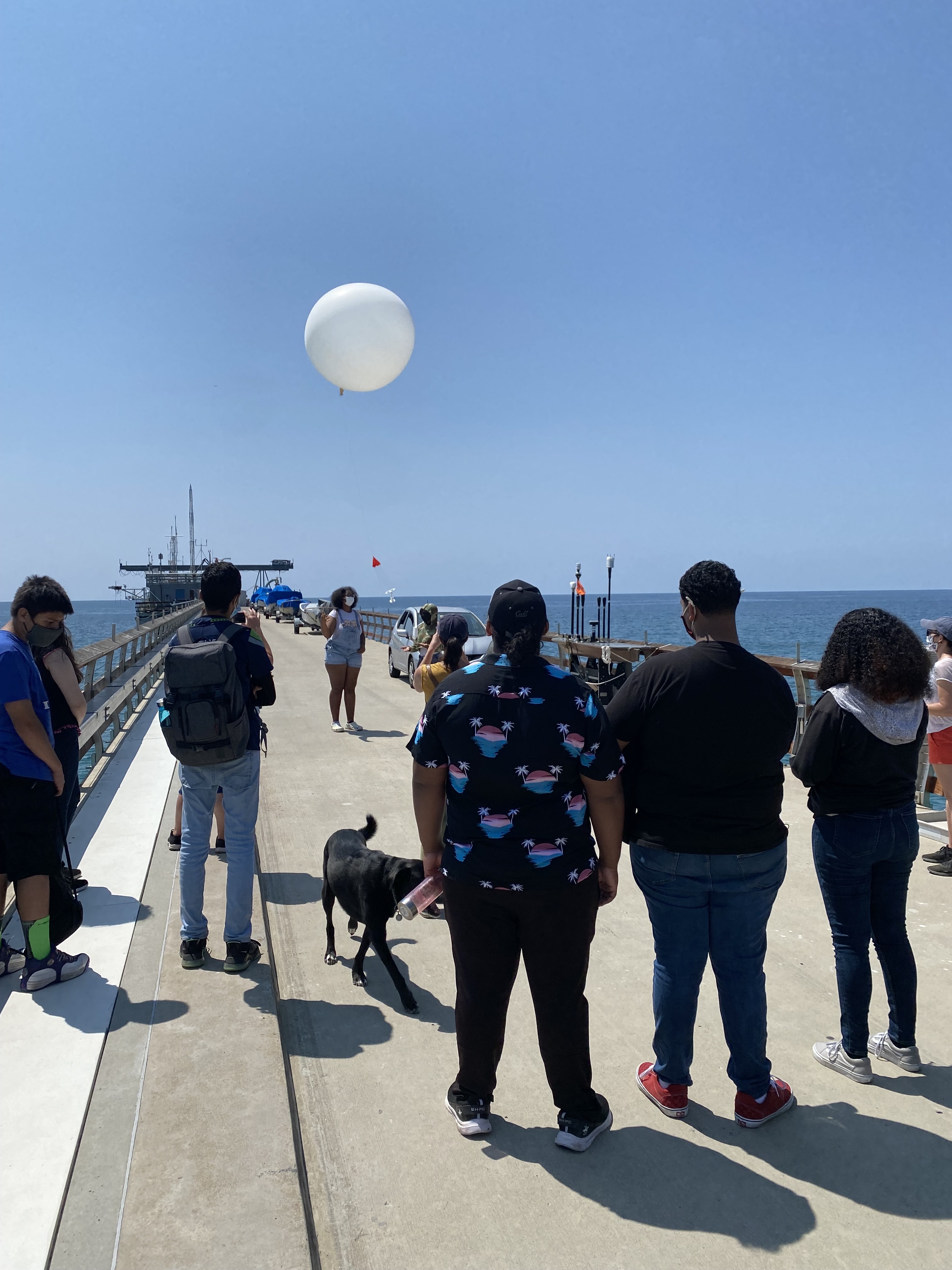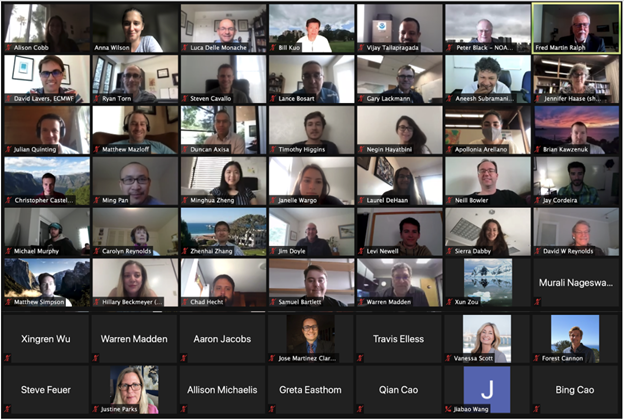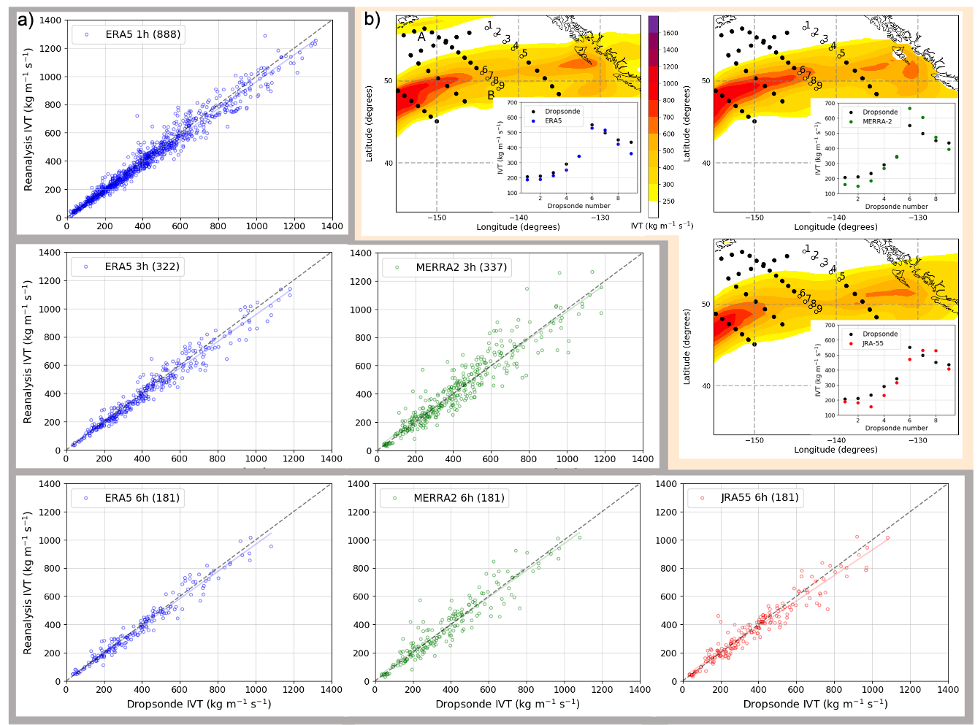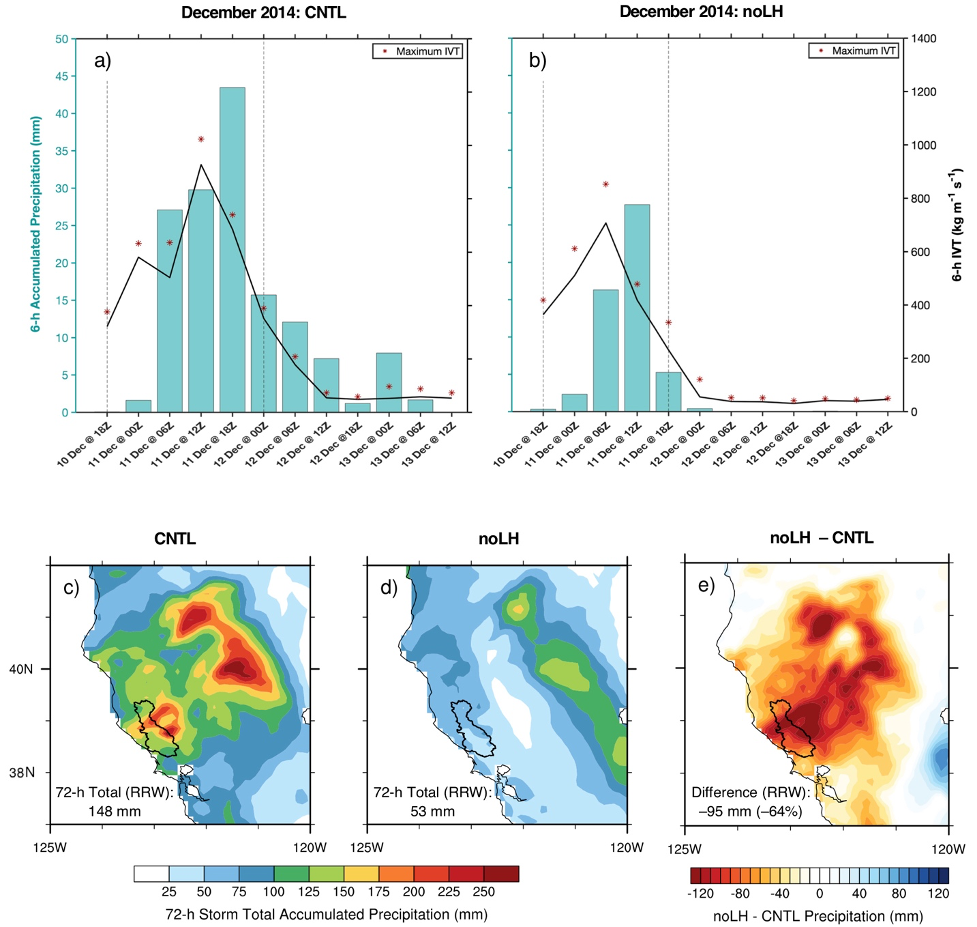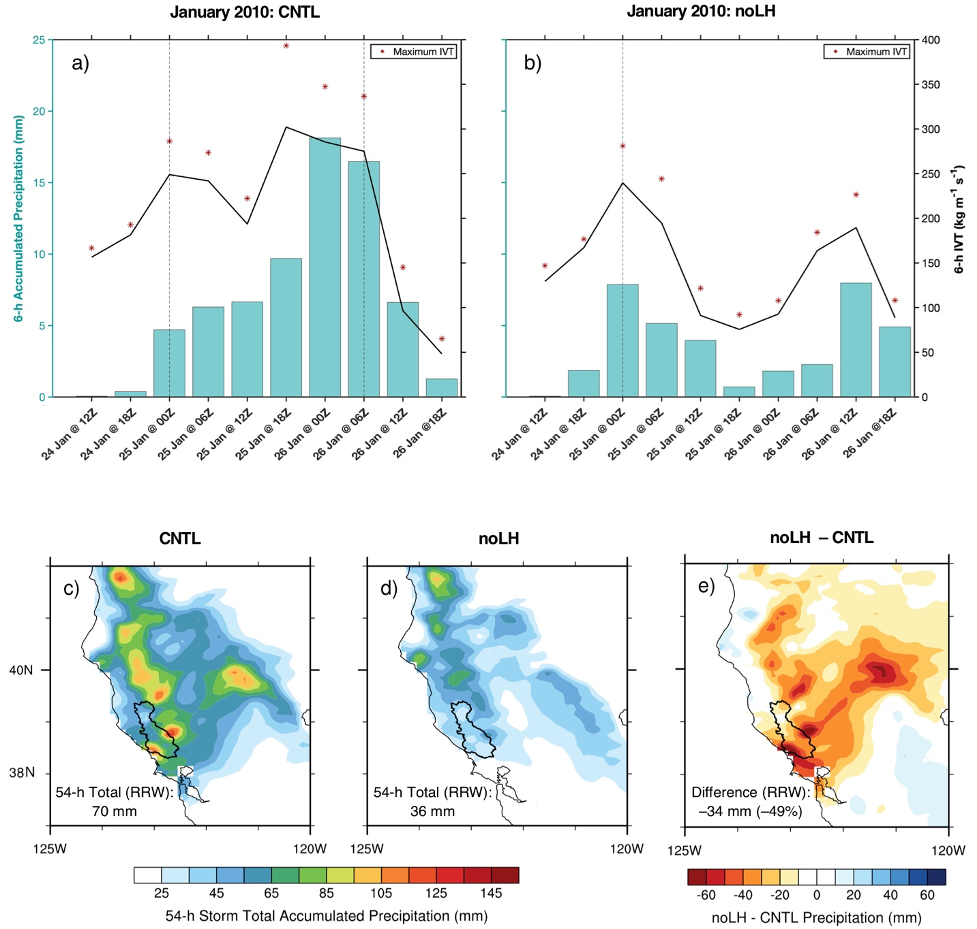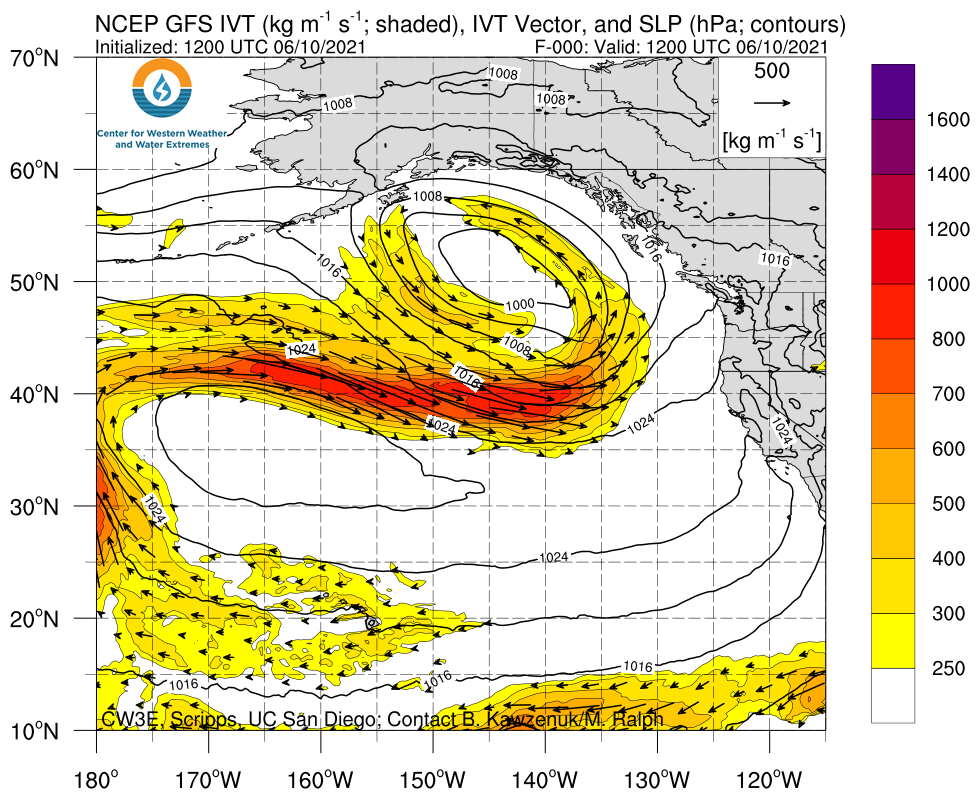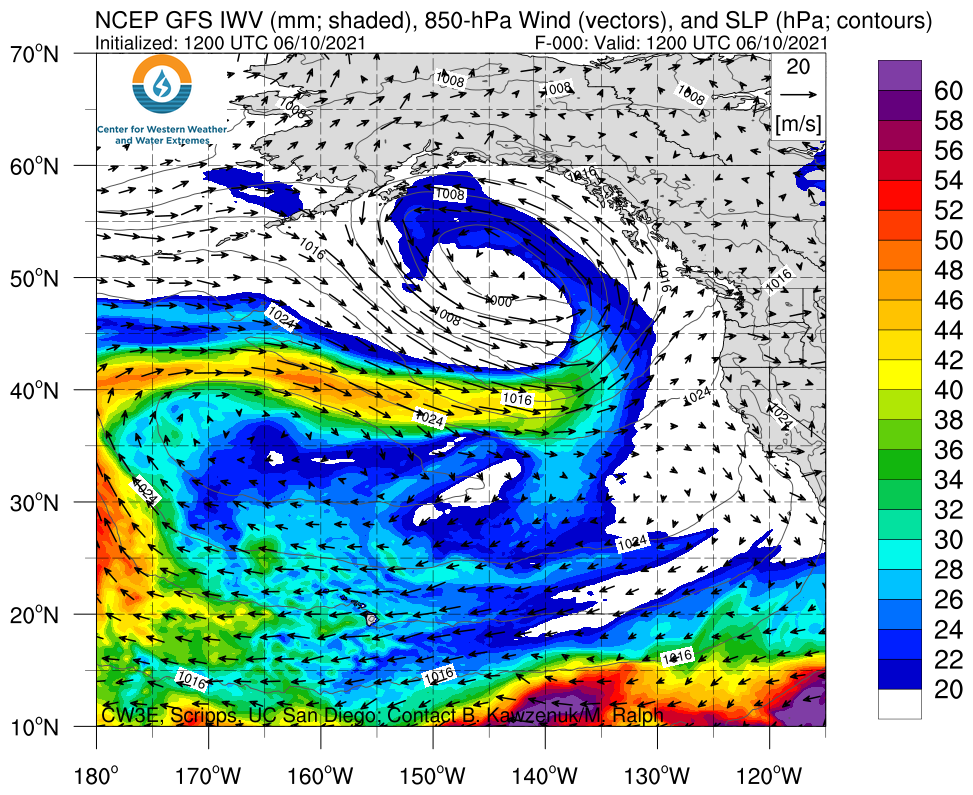The Women of AR Recon
July 20, 2021
Atmospheric River Reconnaissance (AR Recon) is a Research And Operations Partnership (RAOP) between CW3E, NOAA, the Airforce, Naval Research Lab and several academic institutions. The AR Recon Program originated as three missions carried out in 2016 and has been expanding in the number of observations and partners since 2016. AR Recon supports water management decisions and flood forecasting by collecting targeted airborne and buoy observations over the Northeast Pacific to improve forecasts of the landfall and impacts of atmospheric rivers on the U.S. West Coast. The 2021 season of AR Recon wrapped up in March, Women’s History Month, so we interviewed some of the inspiring women involved to get to know them in their own words!

Anna Wilson is CW3E’s Field Research Manager. She is responsible for making sure we collect observations that 1) provide critical support for Western U.S. monitoring and forecasting, and 2) enable us to answer our research questions and move the science forward. These observations may be taken both offshore and onshore.
What was your role in AR Recon this winter?
Part of my role as the Field Research Manager is to serve as AR Recon Coordinator each year. My responsibilities include facilitating our daily meetings; handling all communications between flight directors and flight planners as well as the whole team; setting up document and information sharing; and making sure transitions between roles are seamless. This year I was also able to serve as Mission Director, which meant I was trusted to make the final calls, after getting input from our expert team, on whether or not to fly and on the flight track design.
What was your favorite or most memorable moment of AR Recon this year?
I happened to be able to meet up with the Air Force in Reno before the first mission this year, as I was on my way to be stationed in Bodega Bay with Ava Cooper. Being in person with the Flight Directors is a huge bonus during AR Recon, and makes communication and planning infinitely easier. Of course, that wasn’t possible the rest of the year, but being able to join them (with pandemic safety protocols) during the first forecast meeting in such an unprecedented year was definitely memorable.
What accomplishments are you most proud of this winter?
I am really proud of the entire team for supporting almost double the number of missions that we did last year. This was especially challenging, as everything was, because of coronavirus, but is a major accomplishment in any year. We are also already seeing the positive effects of these observations on forecasts and I anticipate only more as we dig further into this year’s case studies.
Who inspired you and helped you get to where you are today?
I have had a number of amazing mentors and supporters throughout my career from professors to colleagues to my family. I feel really lucky to have such a broad support network and a truly lovely, smart, generous, dedicated group of people with whom to work.

Kerstin Paulsson is a Field Researcher, and the designated field team cheer stunt instructor! As a member of the field team, she helps install, maintain, and monitor CW3E’s meteorological stations across the state as well as perform data quality control and analyses on the observational data.
What was your role in AR Recon this winter?
This winter I released radiosondes from Scripps Pier during storm events that passed over Southern California.
How would you describe your time commitment to AR Recon?
During AR Recon I was “on deck” from January-March for storm sampling, checking forecasts, and plotting up storm data for presentations and review. When storms come in, we sample every 3 hours on the hour, day or night, until the storm has passed! This can lead to some very long (but very fun!) nights.
What was your favorite or most memorable moment of AR Recon this year?
Any opportunity to safely come to campus and work with others felt amazing considering pandemic circumstances this winter. I was lucky enough to enjoy watching the surf at sunset on the pier with a coworker and to teach a couple grad students how to launch radiosondes. While during a “normal” year, or at another job, these moments might not have stood out, the folks at CW3E make collaboration and learning with others one of the best parts of my job.
What accomplishments are you most proud of this winter?
I am proud of everything my team has done this winter. Despite ever-changing safety and travel restrictions, we had to start planning our winter months ahead of time and were able to come up with field plans (and back-up field plans) that made everyone feel comfortable and safe. I’m also particularly proud of myself and my team for prioritizing staying connected while stationed across three separate sites all winter long.

Nikki Hathaway is a Flight Director and Flight Meteorologist with the NOAA Aircraft Operations Center (AOC – NOAA Hurricane Hunters).
How would you describe your time commitment to AR Recon?
This season, I was the lead Flight Director for the second half of the season. As the Flight Director, I would listen in on the morning AR Recon 2021 Forecast and Flight Planning Call on our drive to the airport, develop the morning briefing for the flight crew, and then take off and fly the 7–8.5 hour mission. Fly days can last 10 to 11 hours. Most of the time if we are flying a series, these flights are back to back, and we are usually flying multiple days in a row. While in the air, my main objective is to make sure the science is accomplished and the data we collect is representative. The time dedicated to this mission is well worth it, especially when you know the data we are collecting is positively affecting the operational forecast models and providing critical observations over less sampled environments.
What was your favorite or most memorable moment of AR Recon this year?
I am a fairly new Flight Director, I joined the team at AOC in 2019. The 2020 AR Recon season was my first operational mission. I learned so much about our GIV jet during that first deployment, how to be a flight director, analyze data from dropwindsondes, and the overall mission and importance of AR Recon. Each winter, AR Recon presents new and exciting challenges and goals, making each year we fly this mission unique and memorable. Not to mention, we work with an incredible team of dedicated scientists that make the mission and work that much more enjoyable.
What accomplishments are you most proud of this winter?
This last year we accomplished AR Recon under strict COVID-19 protocols while working out of Honolulu, HI. To capture the amount of data that we did, under such challenging times was extremely rewarding. I am very proud of our team and their dedication.
Who inspired you and helped you get to where you are today?
My Mother. She was the first in our family to receive a college degree and she went back to school while raising two little girls, my sister and myself. She taught me how to defy the odds, work hard, persevere, and to never give up on my dreams.

Jennifer Haase is an affiliated faculty member from Scripps Institution of Oceanography. She collaborates on research that develops the use of GPS technology to make atmospheric measurements of temperature and moisture profiles in ARs.
What was your role in AR Recon this winter?
I led the Airborne Radio Occultation data collection and research effort on the NOAA G-IV aircraft and served as Mission Director for one week during AR Recon.
What was your favorite or most memorable moment of AR Recon this year?
My most memorable moment is always when I see the first measurements come out from my ARO system.
What accomplishments are you most proud of this winter?
I got a new piece of equipment installed on the aircraft that will allow us to make measurements in the lowest part of the atmosphere. I have a long way to go to develop the data processing to extract the information about the moisture, but it is a major first step. Additionally, one of my summer interns from 2020 gave a very well received invited oral presentation on her work on the Loon project, describing the potential for balloons to supplement aircraft observations of ARs.
Lieutenant Colonel Devon Burton is a Pilot and Aircraft Commander with the U.S. Air Force.
How would you describe your time commitment to AR Recon?
I spent 15 days on AR Recon this year.
What was your favorite or most memorable moment of AR Recon this year?
Within an hour after takeoff on our mission, we had an issue with the weather equipment that would only allow us to collect data rather than collect and transmit the data. Our options were to A) Continue on the mission knowing that the data we collected would not be available for use in the upcoming forecast model and would only be used to verify the forecast accuracy after the fact, or B) Turn back and try and get it fixed, risking valuable mission time and foregoing some data collection points that could be used for after-the-fact forecast verification. We decided that our duty was to the mission and if there was a chance that we could get our equipment fixed and improve the forecast, we should take it. We coordinated with our maintenance unit on the ground so they could prepare a plan to fix our issue and be ready to execute their plan as soon as we landed. The maintenance team was able to fix the issue in a record 20 minutes and we were back in the air before we knew it. Although the mission was abbreviated, the data we were able to collect made it into the forecast. Our risk paid off and it was a proud moment for our crew.

Carly Ellis is a Field Researcher at CW3E who is primarily responsible for the group’s hydrologic data collection, but also spends a lot of time on their many surface meteorology stations, trip planning, and partner correspondence.
What was your role in AR Recon this winter?
I was stationed in Yuba County this winter, nearby one of our group’s three radiosonde launching locations and many of our surface met stations.
How would you describe your time commitment to AR Recon?
While working remotely and in the field throughout Northern California, I was on-call for radiosonde launches to coordinate with AR Recon flights over the Pacific. Myself and a partner typically launched every 3 hours during an AR, and up to every hour during peak conditions. This sometimes involved overnight stays in the warehouse from which we launched!
Who inspired you and helped you get to where you are today?
My family originally instilled in me a love of the outdoors and taught me how to work with my hands through various home construction projects and through summers spent on the family paving crew. I also had an incredibly fun Geoscience Department in undergrad where every class felt more like recess than work! Beyond that, I’ve been extremely lucky to work with, and be mentored by, a number of supportive scientists who truly love their jobs.

Minghua Zheng is a staff researcher at CW3E. She works on assimilating atmospheric data into models and performs relevant data analyses and numerical modeling. Her research has been focused on the predictability of landfalling atmospheric rivers that can bring high-impact weather events to the US West.
What was your role in AR Recon this winter?
I was the quantitative tool lead and worked with the sensitivity tool team to synthesize the adjoint and ensemble sensitivity products, which provided guidance on where to fly.
How would you describe your time commitment to AR Recon?
4 hours per day. I spent 1 hr on looking into the weather maps before bed to get a better idea of synoptic weather patterns and key features associated with atmospheric rivers. The next morning, I got up at 6 AM and prepared a synthesized slide for a 3-5 min talk during forecast discussions from 8-9 AM. I was also responsible for making sure someone would be leading the discussions every morning and helping with the interpretation of each product if needed.
What accomplishments are you most proud of this winter?
As an English-as-a-Second-Language (ESL) speaker, I overcame my fear of preparing slides in a short time and speaking in front of many people. Another accomplishment is that our BAMS data gap paper, which demonstrates that AR Recon can effectively fill data gaps within atmospheric rivers, was formally published in the last week of AR Recon 2021.
Who inspired you and helped you get to where you are today?
Madame Curie has been my role model. I read her biography when I was 11. Her success as a female scientist and actions motivated me to be a scientist so that I can become an expert in my field and contribute to the progress of science and technology.

Allison Michaelis was a postdoc with CW3E during the previous two AR Recon seasons. She joined this season from her position as an Assistant Professor at Northern Illinois University and is hopeful to continue collaborating with CW3E on numerical modeling of ARs, mesoscale frontal waves, and ARs and climate change.
What was your role in AR Recon this winter?
I was part of the forecast team, contributed to flight coordination support for the NOAA G-IV aircraft, and was on rotation for quantitative tools lead, presenting a synthesis of the adjoint and ensemble sensitivity tools.
What was your favorite or most memorable moment of AR Recon this year?
Probably hitting 40+ briefings – more than any past season! Continuing to beat records of the number of IOPs (Intensive Operations Period) is also a memorable achievement.
Who inspired you and helped you get to where you are today?
This is a toughie! I’m not sure that I can point to any one person. My original career path was to become a high school math teacher, which I was inspired to pursue by several terrible math teachers throughout middle and high school. The aspiration to do better initially led me down the education path. In terms of helping to get me where I am today, I credit several outstanding mentors and role models throughout undergrad and grad school, particularly Dr. Alina Duca (undergrad math professor), Dr. Sandra Yuter (undergrad meteorology professor and mentor throughout graduate school), and Dr. Gary Lackmann (undergrad meteorology professor, graduate school advisor, and mentor throughout graduate school). I would be remiss if I didn’t also give a shoutout to my peers and friends! Surrounding myself with tough, resilient women inspires me everyday.

Allison Cobb is a seasoned Postdoctoral Researcher at CW3E. Her primary focus has been analyzing dropsonde observations that are gathered during AR Recon. She is also interested in air-sea interactions and is investigating this process in atmospheric rivers using regional models.
What was your role in AR Recon this winter?
I shared the roles of AR Recon Coordinator with Anna Wilson and also Flight Planner with Forest Cannon. I also spent some time working with the forecast team early on in the season.
How would you describe your time commitment to AR Recon?
Generally setting aside 6-10 AM for AR Recon work on all active forecast days, and then continuing with my regular day job until 5 or 6 PM. On quieter days, I might finish with AR Recon soon after 9 AM, but on others when working as the AR Recon coordinator, I may be required to work on logistics throughout the rest of the day.
What accomplishments are you most proud of this winter?
Leading a paper that will summarize the AR Recon 2021 season with collaborators from several groups. This paper will highlight all of the observations collected, as well as detail assimilation of data into and impact on model forecasts.

Ava Cooper is a Field Researcher at CW3E who assists with field operations, including preparation and installation of instrumentation and the ground-based winter field sampling done for AR Recon. She also works on snow and hydrology related research.
What was your role in AR Recon this winter?
This winter, I was stationed at the UC Davis Bodega Bay Marine Lab to launch radiosondes during atmospheric rivers and conduct maintenance on our Bodega Bay RadMet station (Micro Rain Radar, disdrometer, and surface meteorology).
How would you describe your time commitment to AR Recon?
During ARs, we were launching radiosondes about every 3 hours (up to every hour during peak storm conditions) for the duration of AR conditions, often 12-24 hours.
What was your favorite or most memorable moment of AR Recon this year?
Tropical storm force winds at the surface during the frontal passage in January! It was wild (~30 mph winds) and took three attempts to get a radiosonde launched during the peak of the surface winds. The frontal passage was in the middle of our first launches for the season and made for good practice getting back in the swing of launching radiosondes!
What accomplishments are you most proud of this winter?
This winter I learned to launch radiosondes by myself! It sounds simple, but being alone with a balloon on a dark, drizzly night is a pretty eerie experience. There are also just enough steps that you feel like you’re bound to forget something but repetition is your friend in the field!
Who inspired you and helped you get to where you are today?
My family is pretty science- and outdoors-focused! While growing up, we went on lots of summer road trips across the Western U.S. and on geology field trips with my dad. My family has given me a lot of support in pursuing a career in science, which I am incredibly grateful for! I also have many awesome mentors, most of whom are women in earth science. My undergraduate mentor, Dr. Anne Nolin, inspired me to get into snow hydrology and continued to provide mentorship throughout my career. I would not have found this career path without her support along the way!

